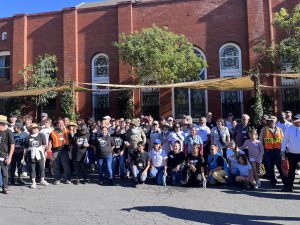Learn More
Linguistic Isolation
Metadata
Variable Definitions:
Limited English Speaking Households: The percentage of households in which no one over the age of 14 speaks only English at home or speaks English “very well” as a second language
Source:
American Community Survey (ACS), 5-year estimates
2006-10 ~ 2011-15: Table B16002
2012-16 ~ Onward: Table C16002
Years Available:
2010 – 2023
*Note: Each year of available data shown above is a 5-year estimate, or an average of data collected over a five year period. 5-year estimates are used to increase the reliability of the data at small geographies like neighborhoods and census tracts. The years shown on the NDSC map represent the final year of the five year average (e.g. “2010” represents 2006-2010 data, “2011” represents 2007-2011 data, and so on). For the most impactful comparison of data over time, the ACS recommends comparing non-overlapping years (e.g. 2010-14 with 2015-19).
Why are these variables important to measure?
Limited English Speaking Households
California is made up of countless unique and culturally rich communities. Californians speak over 40 languages besides English at home, with Spanish as the most common. However, English proficiency can play an important role in accessing certain types of jobs and other social service and healthcare resources. Children in linguistically isolated households often underperform in math and reading when compared to their native-English speaking peers.
Neighborhoods with high rates of linguistic isolation often communicate and function fully without use of the English language, providing children with few opportunities to practice and learn English. However, some research suggests that children surrounded by other linguistically isolated families have the opportunity to learn and practice with other novice speakers and serve as translators for their families.
When measured alongside other datasets such as poverty and student proficiency, high rates of linguistic isolation can be an indication of a need for investment in both child and adult education resources to help socially and economically integrate non-English speaking households and communities in culturally humble ways.
Citation:
American Community Survey. 2017 Subject Definitions. Link.
Han, Wen-Jui. “Bilingualism and Academic Achievement.” Child Development, November 2018. Link.
Hill, Laura. “English Proficiency of Immigrants.” Public Policy Institute of California: Just the Facts, March 2011. Link.
“Linguistic Isolation.” Office of Environmental Health Hazard Assessment & California Environmental Protection Agency, 2018. Link.
Related Data Stories

The Book Truck: Delivering Literacy in Southern California
Why Do Some People Read? For children in some communities, books and reading are omnipresent. Reading begins as amusement and entertainment and grows into a



